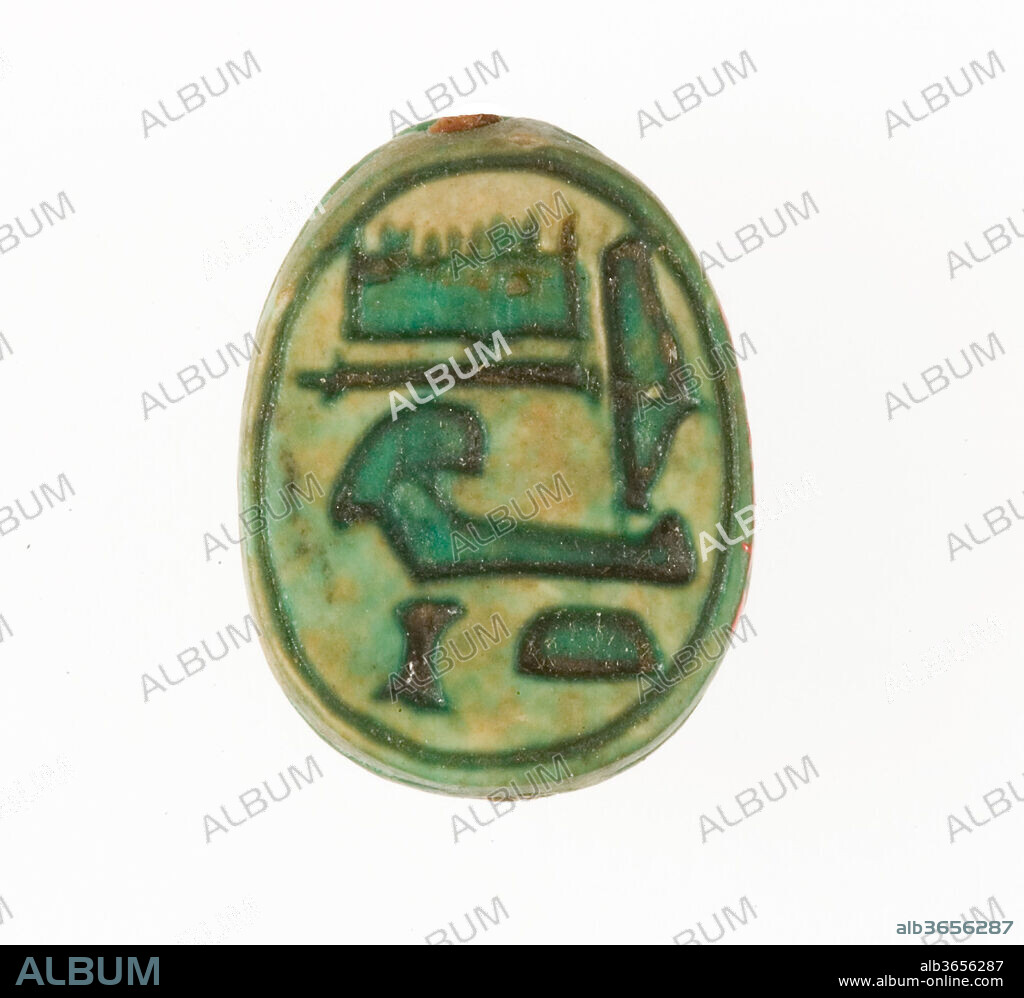alb3656287
Scarab Inscribed with the Name Hatshepsut

|
Añadir a otro lightbox |
|
Añadir a otro lightbox |



¿Ya tienes cuenta? Iniciar sesión
¿No tienes cuenta? Regístrate
Compra esta imagen
|
?
Impresiones, tarjetas y regalos personales o referencias para artistas. Solo para un uso no comercial. No se permite la reventa.
|
$19.99 |
|
?
|
$19.99 |
|
?
|
$49.99 |
|
?
|
$69.99 |
|
?
|
$199.99 |
Añadir al carrito
Para otros usos,
Título:
Scarab Inscribed with the Name Hatshepsut
Descripción:
Ver traducción automática
Scarab Inscribed with the Name Hatshepsut. Dimensions: L. 1.7 cm (11/16 in); w. 1.3 cm (1/2 in). Dynasty: Dynasty 18, early. Reign: Joint reign of Hatshepsut and Thutmose III. Date: ca. 1479-1458 B.C..
During the 1926-1927 excavation season, the Museum's Egyptian Expedition uncovered three foundation deposits along the eastern enclosure wall of Hatshepsut's funerary temple at Deir el-Bahri in Western Thebes. Among the contents were 299 scarabs and stamp-seals. Sixty-five of these are now in the Egyptian Museum, Cairo, and the rest were acquired by the Museum in the division of finds.
Among the inscriptions on the bases of these scarabs and seals are examples of every title Hatshepsut held, from the time she was "king's daughter" during the reign of her father, Thutmose I; through the time she was queen of her half-brother, Thutmose II; and during her co-reign with her nephew/step-son, Thutmose III.
Thirteen of the scarabs (27.3.199 to 27.3.212) are inscribed with various writings of the extended form of Hatshepsuts personal name, Hatshepsut-united-with-Amun, which sometimes appears, enclosed in a cartouche, as the last element of her titulary as king. By adopting this name, Hatshepsut links herself to the powerful god Amun of Thebes, whom she claimed as her father.
On this scarab, the name has been abbreviated. At the top of the base is the name of the god, Amun. Below this are hieroglyphs that spell hat, the first element of Hatshepsit's name.
Técnica/material:
Steatite (glazed)
Periodo:
NEW KINGDOM
Museo:
Metropolitan Museum of Art, New York, USA
Crédito:
Album / Metropolitan Museum of Art, NY
Autorizaciones:
Modelo: No - Propiedad: No
¿Preguntas relacionadas con los derechos?
¿Preguntas relacionadas con los derechos?
Tamaño imagen:
2732 x 2522 px | 19.7 MB
Tamaño impresión:
23.1 x 21.4 cm | 9.1 x 8.4 in (300 dpi)
 Pinterest
Pinterest Twitter
Twitter Facebook
Facebook Copiar enlace
Copiar enlace Email
Email
